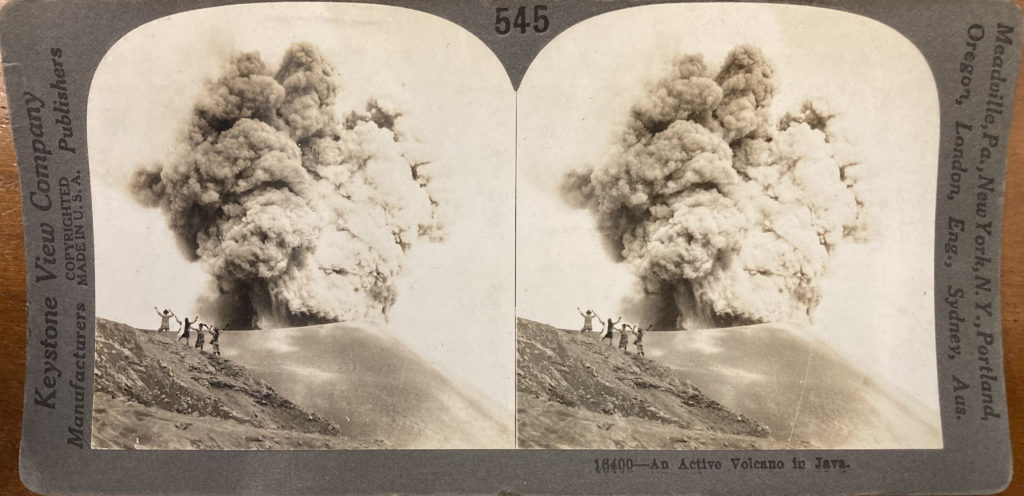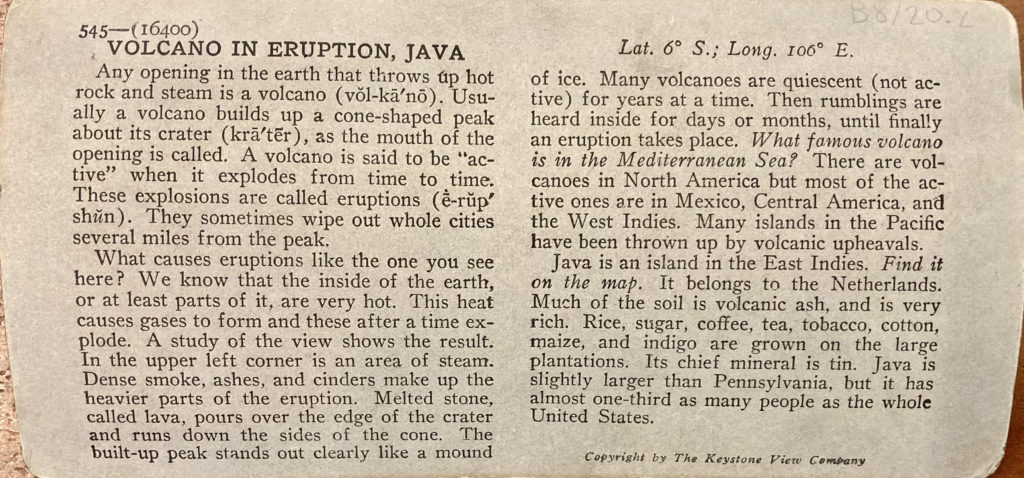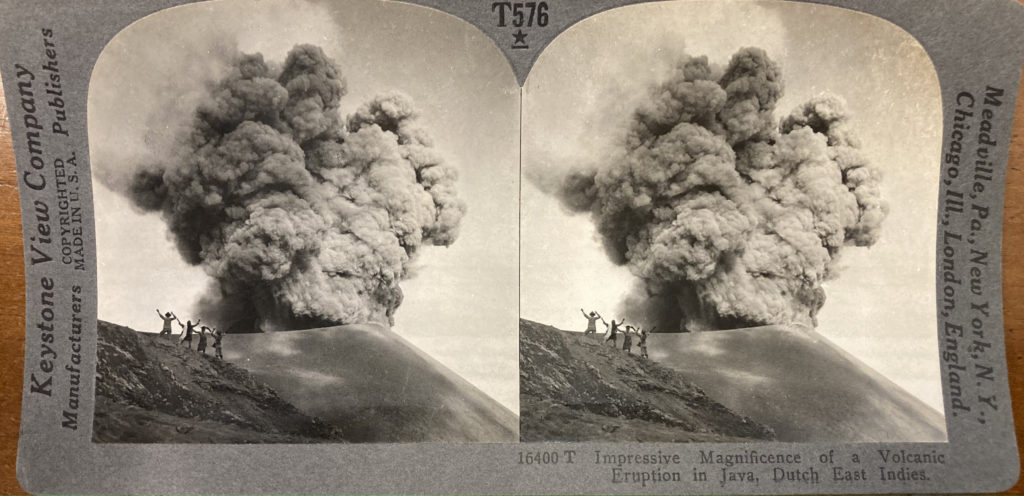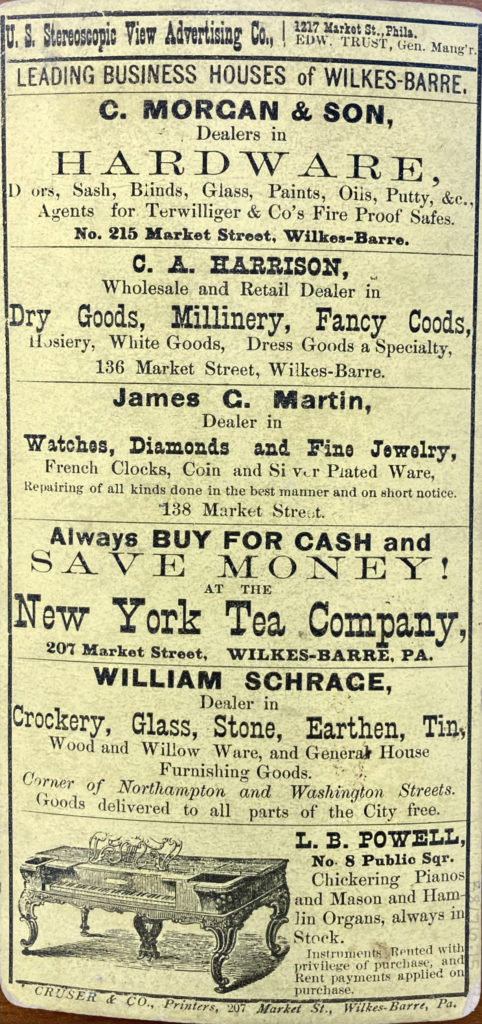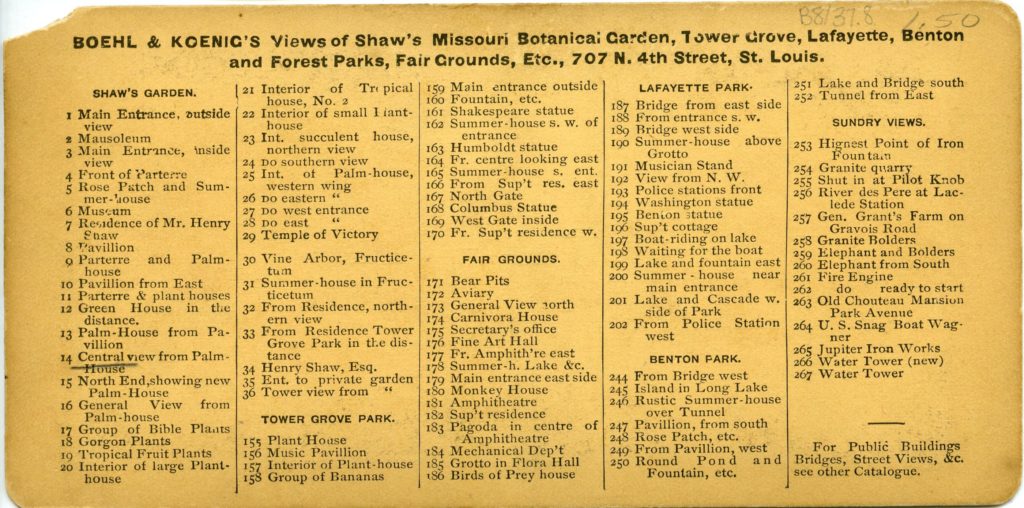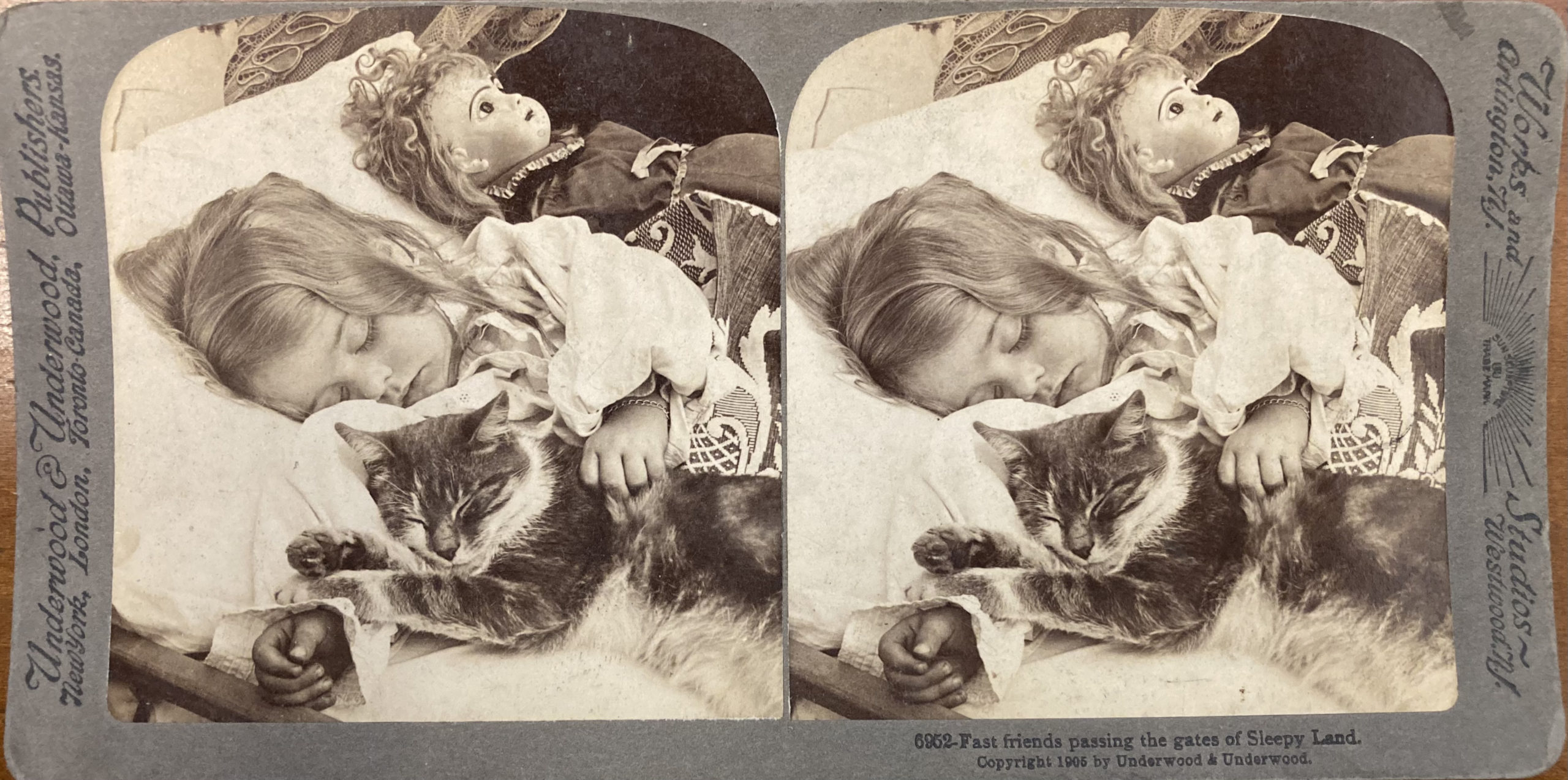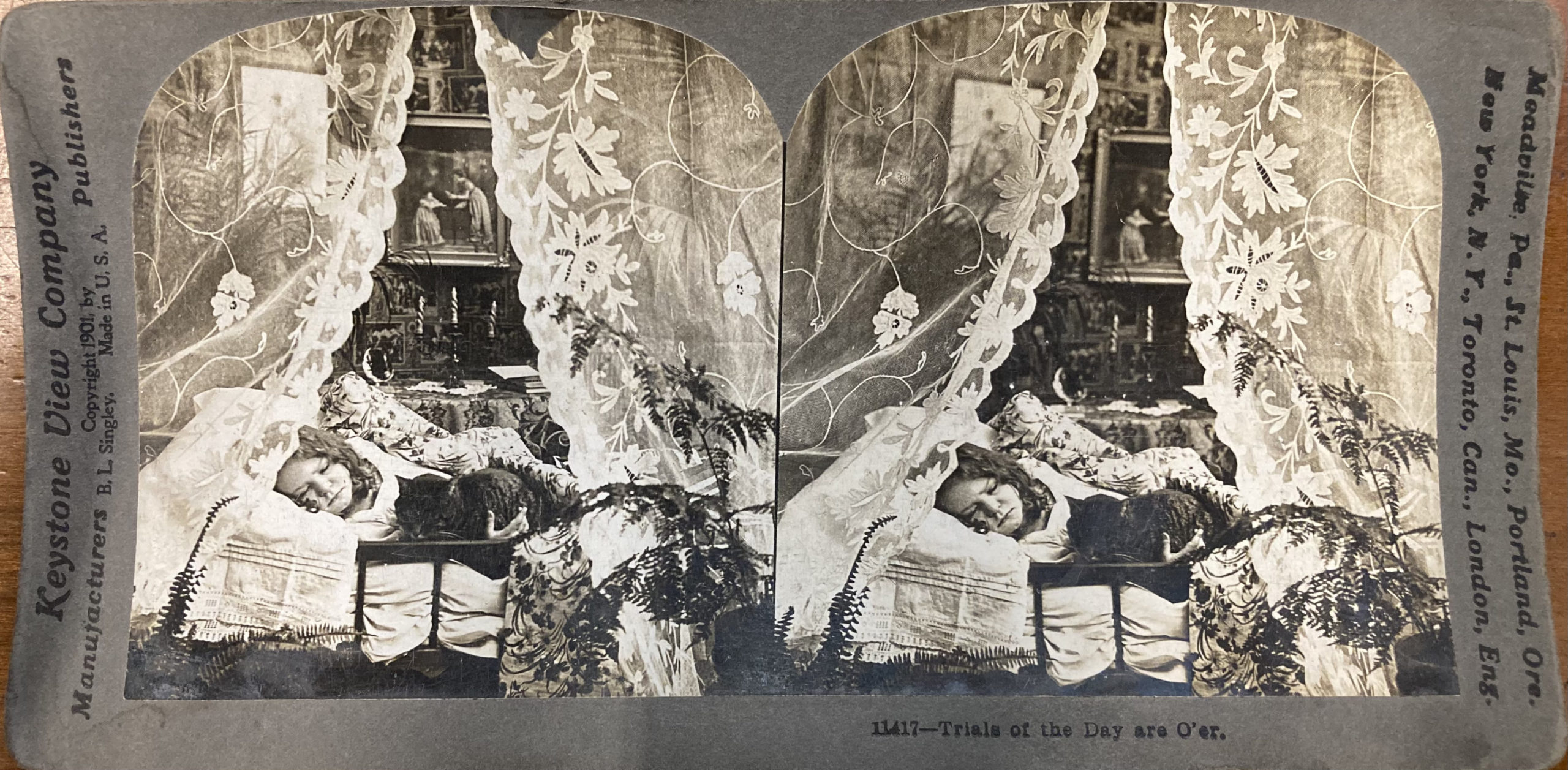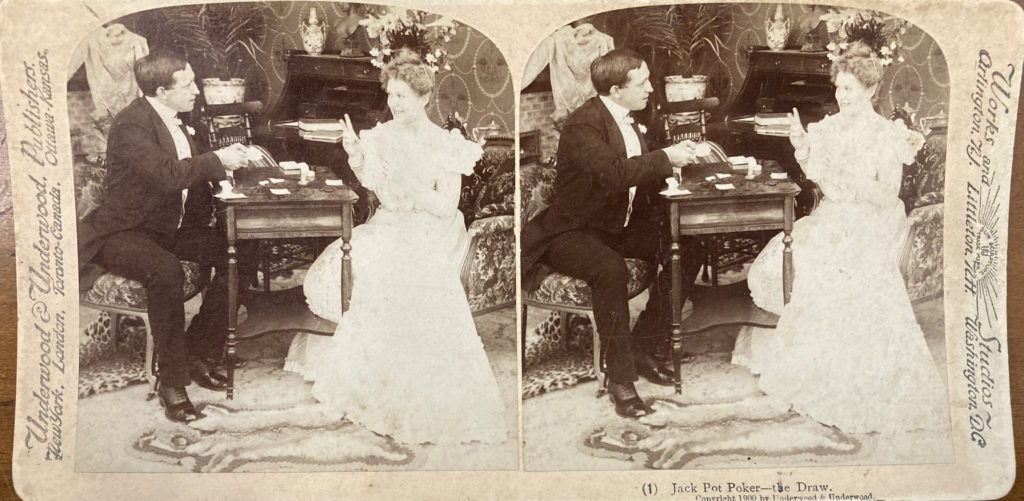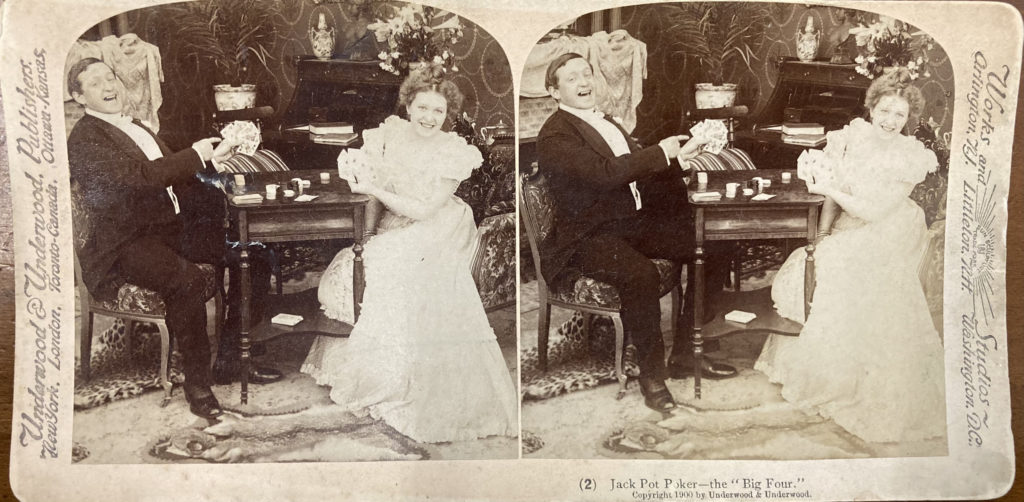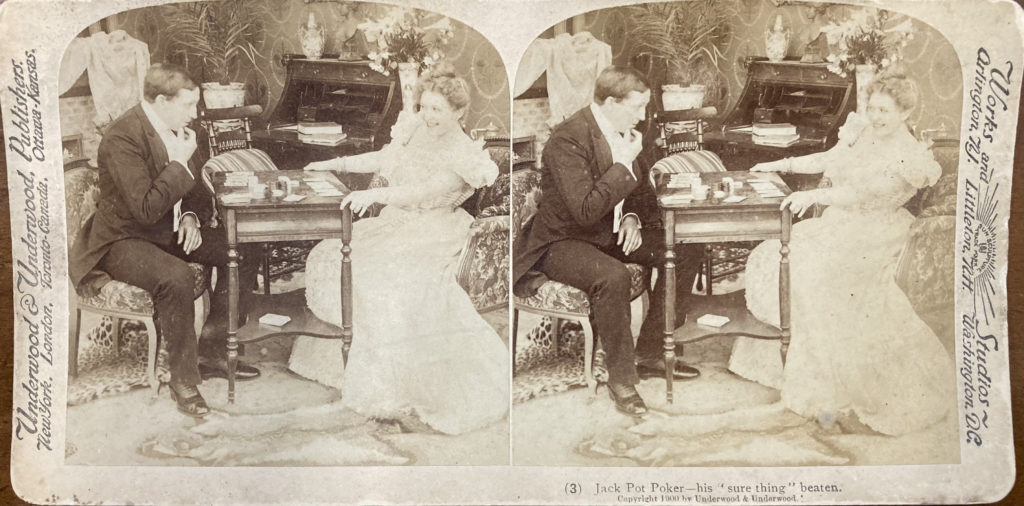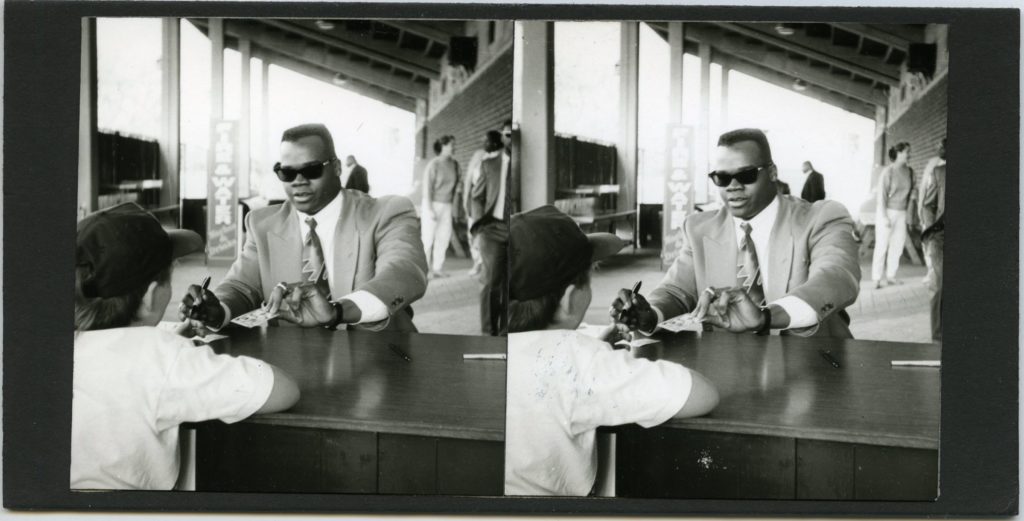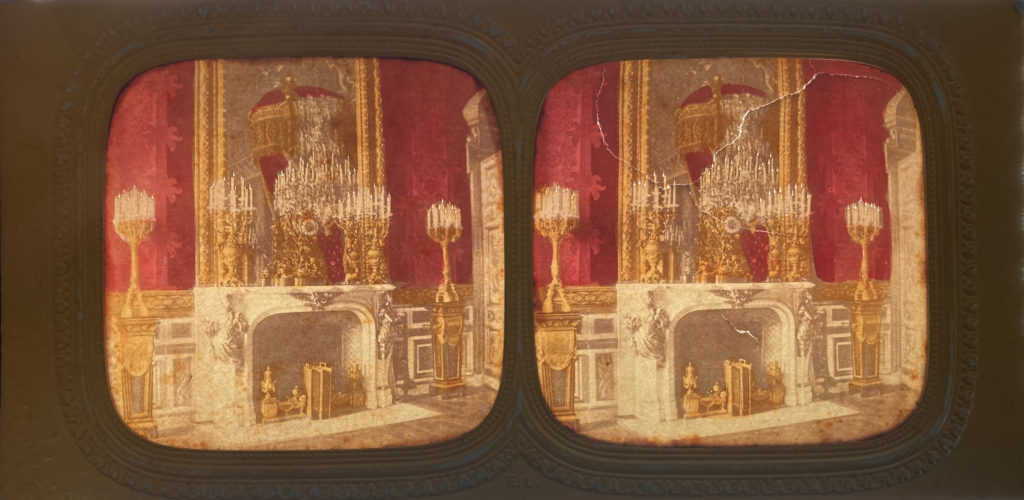Series
Some backstory can be found under History, but in general, a series was a batch of stereographs that focused on a particular subject, most often on the tourist attractions of a chosen country. Book boxes became the ideal way to package those series which contained a large amount of views; simply, the views were kept in a box shaped like a pair of books which could be easily stored on any household bookshelf. Some collectors devoted entire shelves alone to a vast array of book boxes.
During the Great Depression, the company Keystone developed a marketing ploy where customers could personalize a series they wanted to buy. After being presented with an arranged set, they could swap out certain views with subjects they were more interested in. As another plus, a family photoshoot by a stereo photographer was offered, taking the quality of personalization a step further.
A lot of series, especially the large ones, are numbered, both to preserve a certain order and so that the owner can tell when one might be missing. Sometimes, different editions of the same series caused discrepancies between numbers; the position of one stereograph could be 7 in the first edition, but in the next, rearranged to 26. To try and remedy some of the confusion, little charts were printed on the back which showed what position a stereograph should occupy in which edition.
Backsides
There are various other kinds of text which can be found on the backside of a stereograph. One kind, rather than a series position chart, is an entire list of a single stereo photographer’s works, called a backlist. This helped entice a customer to pursue the entire collection. If there wasn’t a list, a logo or company information was usually present. Information about the subject was also common.
Advertising also took advantage of the space on the back of a stereograph. A lot of them printed ads related to the content of the image, or else there may have been an arrangement of random ads grabbing at the chance for exposure. Sometimes, the stereograph itself was an ad, like the image of a store whose products were listed on the back.
Cat Photos
One of the trends that may sound familiar to modern viewers is the fascination with pictures of cats. Many of them are also humorous, just like many cat photos proliferated on the internet in recent years. As John Waldsmith describes it in his Stereo Views guidebook:
“Feline mischief is the usual subject, with cats or kittens climbing, at play with children, or getting a squirt of milk from a farmer as he milks the family cow. Cats were also dressed as humans (usually grandma) and propped up for portraits.”
People without Presence
Celebrities were not always easy to meet in person for a stereograph. To get away with selling celebrity views anyway, some photographers obtained a regular, single-lens photo of their desired subject and decorated it with a frame of flowers. This way, at least the flowers gave off a stereo effect, and the view could still be marketed under the celebrity subject.
On the topic of “presence,” a certain phenomenon called “ghost images” became popular in stereographs, although it was first discovered in regular photography. It happens when a double exposure is made of a photo, imprinting another image on top of what’s already been captured. With this method, photographers could pose gauzy, semi-translucent figures in their scenes. In stereographs, the subject was sometimes ominous, but a lot of them portrayed the idea of a guardian angel watching over a child.
Tissue View
Some unique stereographs took advantage of the nature of light—many of them French, which earned them the name “French tissues.” The “tissue” part comes from the material the were printed on, which allowed for pinpricks to be poked into strategic places on the image, allowing light to shine through through when illuminated from behind. Colors, too, could be brightly revealed through backlighting.
Another trick of the tissue view was to create a hidden subject. For instance, a stereograph could portray a daytime scene, but when held up to the light, reveal a moon and stars. Of all the hidden subjects, the day-night scene was most common.


